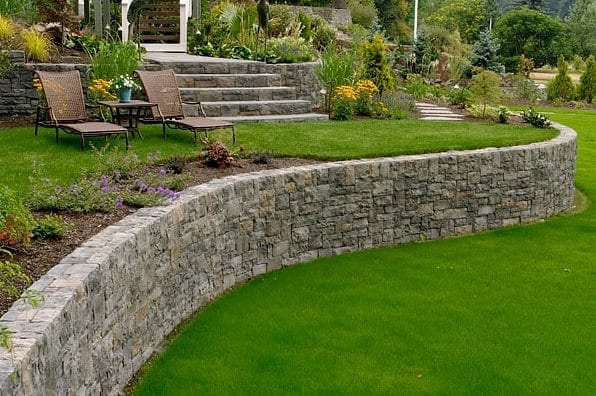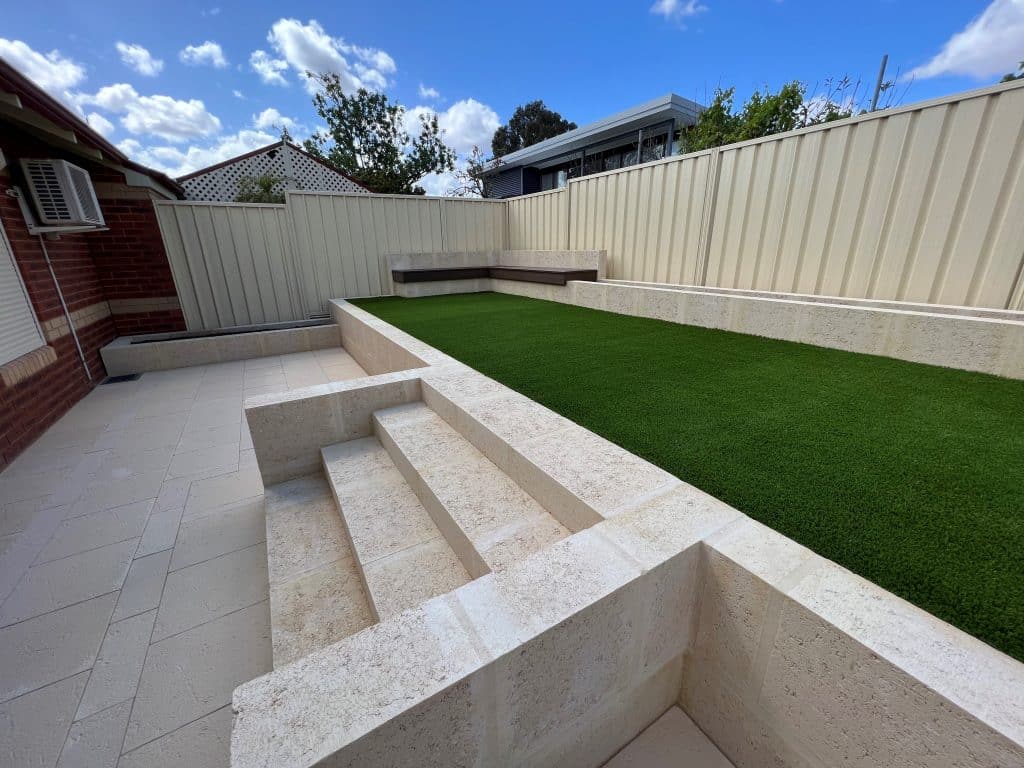Making Sure Architectural Integrity: The Significance of Correctly Built Keeping Walls in Avoiding Slope Failure
In the realm of civil design and building and construction, the relevance of correctly created preserving walls in averting slope failing can not be downplayed. By exploring the elaborate interplay in between these elements, a much deeper comprehension of the essential role that maintaining walls play in protecting structural honesty and avoiding slope failing emerges.
Role of Retaining Walls in Stability
The indispensability of preserving walls in ensuring slope stability is extremely important in civil design practices. Maintaining wall surfaces serve a critical role in stopping dirt erosion, handling water overflow, and keeping the structural stability of inclines. By supporting near-vertical or upright grade adjustments, retaining walls assist to rearrange side stress put in by the dirt, thereby lowering the risk of slope failure.
One secret feature of preserving wall surfaces is to counteract the pressure of gravity acting on the soil mass behind them. This is attained via correct style and building and construction, which considers elements such as dirt kind, wall surface height, water drainage provisions, and potential additional charge loads. By successfully preserving soil within specified limits, these frameworks assist to support slopes and stop landslides.
Furthermore, maintaining walls add to the aesthetic appeals of landscapes while supplying practical advantages. They can produce terraced levels for landscaping, support streets or structures on hillsides, and enhance the overall use of sloped surface. Essentially, preserving wall surfaces play an essential function in keeping slope security and making sure the security and durability of civil design tasks.
Factors Influencing Wall Efficiency
Elements that affect the effectiveness of retaining wall surfaces consist of soil residential properties, wall style, and exterior tons. Soil buildings play a critical function in establishing the stability and performance of a maintaining wall. Variables such as dirt type, cohesion, inner friction angle, and groundwater problems can impact just how well a wall surface retains the dirt behind it. The design of the preserving wall is an additional key element that influences its performance. Appropriate wall surface style takes into consideration factors like wall height, wall kind (e.g., gravity walls, cantilever wall surfaces), reinforcement materials, drain systems, and building and construction methods to ensure the wall surface can withstand the side stress put in by the retained dirt. Additionally, exterior lots, such as surcharge lots from adjacent frameworks or traffic, seismic pressures, and water pressure, need to be carefully examined throughout the design and building phases to guarantee the wall can adequately stand up to these exterior forces. By taking into consideration these factors comprehensively, designers can create retaining walls that properly prevent incline failure and make certain long-term structural honesty.
Layout Considerations for Preserving Wall Surfaces
Incorporating the essential facets of dirt residential or commercial properties and external loads right into the structural layout procedure is vital for creating efficient preserving walls that guarantee incline security. When designing maintaining wall surfaces, engineers should thoroughly review the features of the surrounding soil, including its drainage, kind, and compaction properties. Comprehending these soil buildings is important for determining the proper wall density, reinforcement, and height needed to endure the side pressure put in by the soil mass.
Additionally, outside lots such as surcharge loads from close-by frameworks or traffic, in addition to seismic pressures, have to be thought about during the layout stage. These loads can substantially influence the stability and performance of a preserving wall surface, necessitating using proper style strategies and materials to reduce prospective failing threats.
Additionally, the choice of ideal materials, such as concrete, stone, or timber, should align with the visual needs and site-specific problems. Variable of safety considerations, drainage provisions, and building techniques are also important aspects that influence the overall design and functionality of keeping wall surfaces in protecting against incline failure. By thoroughly considering these layout considerations, designers can guarantee the architectural honesty and lasting security of keeping walls.

Building Best Practices for Longevity
When creating preserving Going Here wall surfaces for ideal sturdiness and durability, adherence to industry-standard techniques and meticulous focus to detail are extremely important. To guarantee the resilience of a retaining wall surface, correct site prep work is vital. This includes ample compaction of the dirt, appropriate drainage systems, and making certain the wall surface's foundation is sound. Utilizing top quality products, such as concrete blocks or all-natural stone, is vital for the durability of the framework. Additionally, utilizing skilled experts with experience in creating retaining walls can dramatically impact the longevity of the end product.
Incorporating reinforcement techniques, such as geogrids or steel bars, can boost the structural integrity of the retaining wall surface and prevent potential failings. By adhering to these building and construction ideal practices, preserving wall surfaces can stand up to the examination of time and successfully avoid slope failure.
Value of Proper Upkeep
Routine upkeep is vital for maintaining the structural honesty and functionality of preserving walls over time. To make sure that retaining walls proceed to perform their designated feature efficiently, normal inspections must be performed to determine any kind of signs of wear and tear.

Final Thought
In verdict, preserving wall surfaces play a critical duty in ensuring structural integrity and avoiding slope failure. By considering factors influencing wall surface performance, sticking to make factors to consider, following construction best techniques, and carrying out proper maintenance, the resilience of keeping walls can be made best use of. Retaining Walls Sunshine Coast. It is important to identify the relevance of appropriately built keeping walls in keeping stability and avoiding potential threats related to slope failure
Variables that affect the efficiency of retaining walls consist of soil residential properties, wall design, and exterior tons. Proper wall layout thinks about factors like wall surface height, wall kind (e.g., gravity walls, cantilever wall surfaces), reinforcement materials, water drainage systems, and building techniques to make sure the wall this website can withstand the side pressure exerted by the preserved dirt. By considering these factors adequately, designers can build retaining wall surfaces that efficiently prevent incline failure and ensure lasting structural integrity.
Maintenance tasks may include clearing water drainage systems to stop water buildup behind the wall try this surface, repairing any type of visible fractures or damage, and making certain that the wall surface is totally free from vegetation that might apply stress on the structure. By thinking about variables influencing wall efficiency, sticking to design considerations, adhering to construction best methods, and applying proper maintenance, the longevity of keeping wall surfaces can be taken full advantage of.
Comments on “Picking the Right Products for Retaining Walls Sunshine Coast Projects”